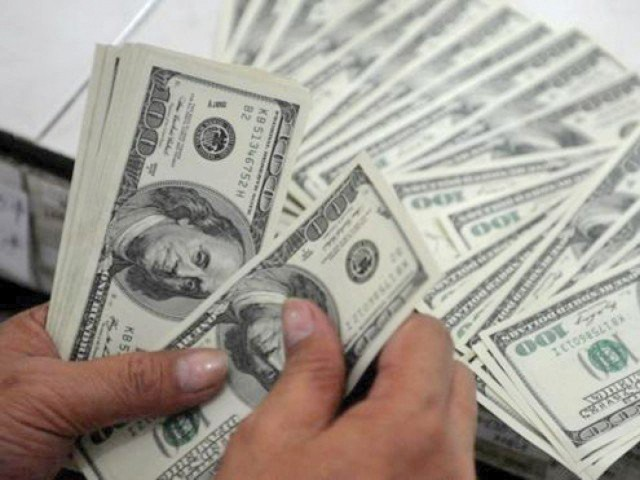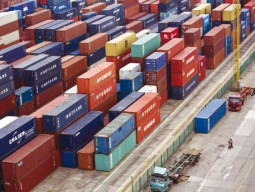
LAHORE: The Foreign Direct Investment (FDI) Confidence Index, prepared by AT Kearney, is an annual survey that tracks the impact of political, economic and regulatory changes on FDI intentions and preferences of CEOs, CFOs and other top executives of Global 1,000 companies.
The United States tops the FDI Confidence Index for the sixth year in a row. Its continued attractiveness for foreign investors is likely the result of its large domestic market, improving economic performance and new lower corporate tax rate.
The government’s protectionist rhetoric and actions may also be motivating some companies to invest in the US to keep market access.
There are significant shifts among leading destinations for the FDI. Top five countries on the index have not changed in the past three years, but their positions have shifted.
Most notably, Canada has risen to the second place in 2018, its highest-ever ranking, and China has fallen to the fifth position, its lowest ranking.
Germany has dropped one spot to the third place and the United Kingdom has held steady at the fourth position.
While the top 10 destinations for the FDI were same in 2016 and 2017, there is a change in the composition of the list for 2018. Switzerland and Italy have entered the top 10 for the first time in more than a decade, edging out India and Singapore.
Actual investment flows in 2017 show that the US received FDI of $311 billion, Canada $26 billion, Germany $35 billion, the UK $20 billion, China $144 billion, Japan $34.3 billion, France $50 billion, Australia $60 billion, Switzerland $28 billion and Italy $21 billion.
European markets have attracted significant investor attention in recent years and this year is no exception. In fact, Europe has staged a comeback in 2018 after its position dropped in the two previous years.
All in all, European markets account for more than half the positions on this year’s index as well as half the top 10. Furthermore, the three newcomers to the 2018 index are all European markets: Denmark (20), Portugal (22) and Norway (23).
The flip side is that this year marks an all-time low for emerging markets in the index. Just four emerging markets appear among top 25 countries for FDI intentions ie China, Brazil, Mexico and India. This suggests that confidence in specific emerging markets has waned.
FDI: China leads, but foreign direct investment declines 4.5% in January
However, investor interest in overall emerging markets remains strong. While 44% of investors report that they are seeking to increase their investments in emerging markets, only 40% are seeking to do the same in developed markets and 39% in frontier markets.
Investor intentions then may be spread more widely across the emerging market space, resulting in fewer individual emerging markets appearing on the index.
In fact, the three countries that appeared on the 2017 index, but do not appear this year, are all emerging markets – Thailand, the United Arab Emirates and South Africa.
Two of the three countries with the largest drop in ranking are also emerging markets. Brazil, the country with the most significant drop, falls nine spots, continuing its three-year slide from sixth place in 2015 to 25 in 2018. India falls by three spots, reversing its two-year rising streak.
FDI grows 132% to $340.8m as China dominates
Among developed markets, Spain suffers the largest drop, falling four spots to 15th place.
India’s opaque regulatory environment and prevalence of corruption is the primary deterrent to foreign investment, according to the AT Kearney report.
Relatedly, some investors also point to inefficiencies in India’s legal and regulatory processes as a negative aspect of its investment environment.
The government has been pursuing an anti-corruption drive in recent years, so these governance factors may improve over time. The security environment is another factor that may give some investors pause.
Finally, investors also highlight the quality of India’s transportation and electricity infrastructure as among the worst aspects of its investment environment.
Notably, all of these negative factors are within the government’s direct power to improve. This bodes well for the future of India’s investment environment should the government continue to try to tackle these issues through its reform agenda.
However, one has to also consider the fact that such indices may contain certain biases. When assessing the FDI environment, other factors such as ease of doing business, certain regulations, provision of skills and inclusive policy-making are also factors that affect investment climate in a country.
FDI expected to surge 60% in Pakistan
Case of Pakistan
For an investor, the expected relative risk-return ratio is the driving force of investment decisions. Therefore, they tend to invest in countries and projects where they expect the highest return and the lowest risk relative to alternative investment opportunities.
Pakistan’s success in attracting foreign investment thus depends on its competitiveness as an investment location relative to other countries. Boosting Pakistan’s international competitiveness on a global scale will be crucial in reaching its growth targets in general and its FDI targets in particular.
Pakistan as a market presents a mixed picture. Multinational companies in the consumer goods sector have shown steady profits, but other industries, including the pharmaceutical sector, have been stymied by onerous government regulations and lack of intellectual property (IP) protections, which has led several foreign firms to leave Pakistan.
Power generation companies have experienced an uptick in business activity. The ICT sector is growing steadily, especially companies outsourcing services and software development.
According to the State Bank of Pakistan’s report, foreign investment picked up pace from last year’s levels, with both direct and portfolio investment contributing to the gains.
Net FDI inflows rose 4.4% to $2.1 billion in July-March 2017-18 against $2 billion in the same period last year.
While China continued to have a major share, accounting for 55% of overall inflows, significant FDI from other countries like Malaysia and the UK was also witnessed this year.
A real test for Pakistan is under the China-Pakistan Economic Corridor (CPEC) as the Chinese industrial structure is changing and is divesting from China and relocating to neighbouring countries. Pakistan is competing with India, Vietnam, Bangladesh and Myanmar to attract these industries shifting out of China.
Pakistan has to offer an environment on a par with or better than these countries to attract investments from China. This will require strengthening the policy domain and the institutions responsible for managing investments as well as also ensuring adequate support infrastructure – energy, power and logistics – and services such as banking, insurance and skills providing agencies are made available to local as well as foreign investors.
Dr M Amanullah is the Chief Economist, Government of Punjab and Mohammad Usman Khan is a member of the Faculty of Economics at LUMS
Published in The Express Tribune, July 2nd, 2018.
Like Business on Facebook, follow @TribuneBiz on Twitter to stay informed and join in the conversation.


































1713509570-0/Taylor-Swift-Album-Release-(1)1713509570-0-270x192.webp)

























COMMENTS
Comments are moderated and generally will be posted if they are on-topic and not abusive.
For more information, please see our Comments FAQ